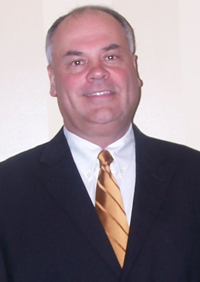 When the asset-backed securities market–the lifeblood of the credit card industry–froze up during the credit crisis, Alliance Data Systems was hit along with the rest of the industry. But that's where Alliance's similarity to competitors such as MasterCard and Discovery Financial Services ends.
When the asset-backed securities market–the lifeblood of the credit card industry–froze up during the credit crisis, Alliance Data Systems was hit along with the rest of the industry. But that's where Alliance's similarity to competitors such as MasterCard and Discovery Financial Services ends.
Instead of hunkering down, conserving cash and riding out the storm as most others were doing, Alliance, which through its three businesses runs private label, co-branded credit card programs and loyalty rewards programs for such companies as Crate & Barrel, Ann Taylor and J. Crew, adopted a contrarian stance and looked to grow its business, thanks in large part to its treasurer, Robert Armiak.

Robert Armiak
Armiak, who has worked at Dallas-based Alliance since 1996, had locked in capital ahead of the crisis. With the ABS market in cardiac arrest, he went out and secured an additional $2.5 billion of funding through a bank term loan, a convertible debt offering, brokered CDs and extended bank conduits. Armiak added another $1.65 billion of liquidity by jumping early into the Term Asset-Backed Securities Loan Facility (TALF), the program launched by the Federal Reserve to revive the ABS market. Armiak took advantage of TALF to replace Alliance's short-term borrowing with longer-term debt.
“We knew we weren't going to have any trouble funding our private-label credit,” Armiak says, because of the strong credit scores of consumers who shop at these retailers and the low balances those consumers maintain on their cards. In fact, Alliance opened up credit for that part of its business, acquiring portfolios that were being disposed of at fire-sale prices. “We made a pitch to grow that business when most banks were conserving credit,” he says.
Even more daring was Alliance's decision to launch a stock buyback at a time when most companies had suspended buying shares. Alliance's stock had plummeted to around $25 a share, a fraction of what CEO Edward Heffernan and Armiak believed it to be worth. Armiak tapped into the convertible bond market to raise more than $1 billion and used the proceeds to purchase 35% of Alliance's shares on the cheap. The stock has since recovered to around $70 a share.
Looking ahead, Armiak is making certain that Alliance's capital structure is in place so the company can continue to grow. The key? Keeping a large tool kit of financial instruments and maintaining strong relationships with investors, he says. “I don't go two days without talking to some debt investor or banker somewhere.”
© 2025 ALM Global, LLC, All Rights Reserved. Request academic re-use from www.copyright.com. All other uses, submit a request to [email protected]. For more information visit Asset & Logo Licensing.




